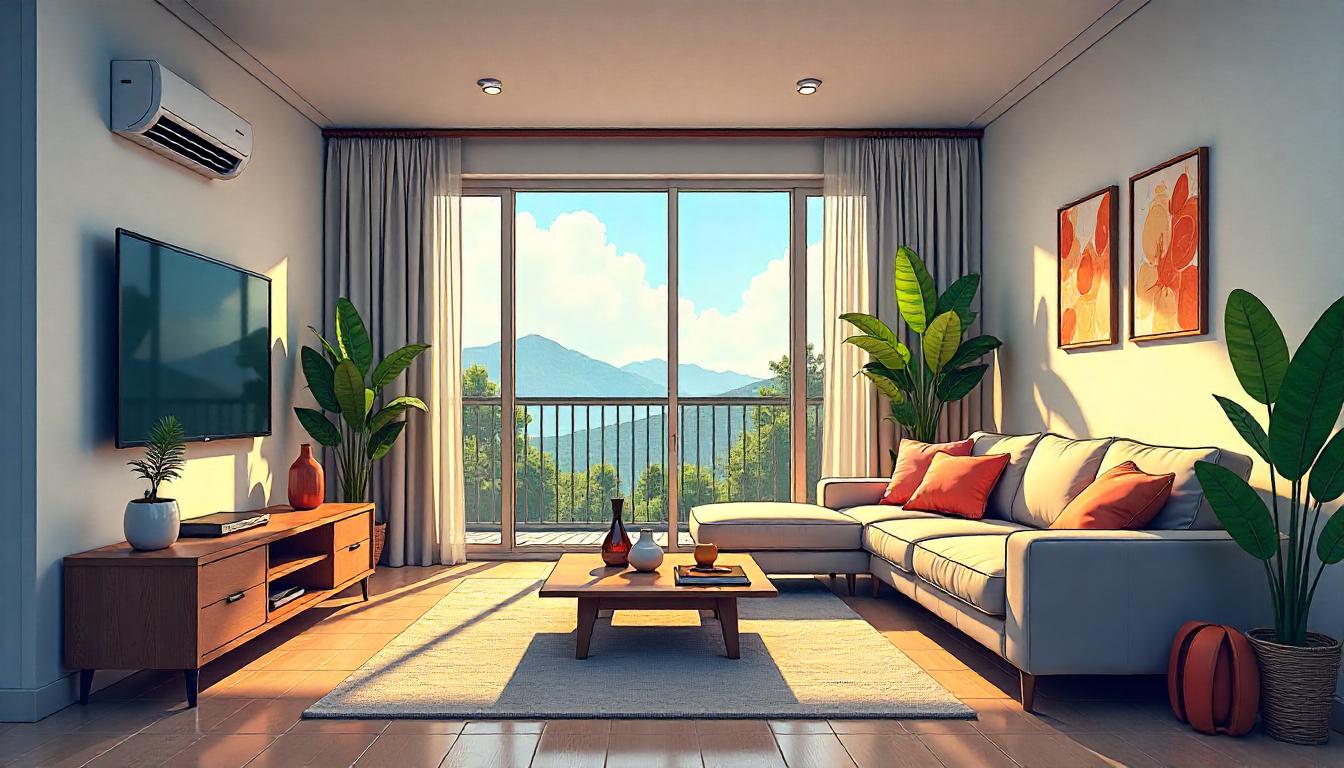
The sun has risen, birds are chirping, the flowers are blooming and the people are in a hurry for their work. So, how about you? Same like others. Aren’t you? Busy with all of your works, you also get up from the bed and go to the window to see the next new day’s arrival.
What would you like to see as the very first sight in your new day? If it would be a nice garden made by your own, will you be happy? Why not? But the problem is most of us who are living in urban cities don’t get the chance to have even a small garden in their own premises. Anyway, the problem is over now. You can have your own pretty garden even inside of your home now. Or you can have a large plantation if you like to do some more. However, without soil! Rather than having not enough space for gardening, you may also not like in digging in the dirt. Yet, there is still a way you can have a garden. It is a simple solution called hydroponics!
What is hydroponics?
Simply, hydroponics is a method of growing plants in a soilless solution. As the method is called hydroponics and “hydro” means water, many may think that the soilless solution should be water. Of course, it can be water, but it doesn’t have to be. Hydroponics can be done using any nutrient solution or inert growing medium such as gravel, vermiculite, rock wool, peat moss, sawdust, coir dust, coconut fiber etc. basically to provide mechanical support. It can be anything rather than traditional potting mixes or soil.
The history of hydroponics
The earliest published work on growing terrestrial plants without soil was carried out in 1627 by Sir Francis Bacon and water culture became popular after that. In 1699, John Woodward could find that plants in less-pure water sources grew better than plants in distilled water. Time to time, the modern hydroponics culture was born in 1929, in the university of California by Dr. William Fredrick and began to promote that solution culture to be used for agricultural crop production. He created a sensation by growing tomato vines twenty-five feet high using mineral nutrient solutions rather than soil.
Is it complicated for you to do hydroponics?
Absolutely not! It doesn’t have to be. In fact, hydroponics growing is simple. Even a child can do it.
The classification of hydroponics
When you are going to select a technique for your own hydroponic garden, there are few factors that should be considered when selecting a technique. You should be careful about space & other resources, expected productivity, availability of suitable growing medium and expected quality of the product such as color, appearance etc. Just few things are needed for yourself. They are;
- Buffer action – A solution/inert medium maintaining pH and electrical conductivity in a suitable range for the plant root system
- A nutrient solution/ fertilizer mixture containing all micro & macro elements
- Suitable temperature & aeration
So, let’s simply talk about the various methods that we can try in hydroponics.
1. Circulating method (closed system)
In here the nutrient solution is pumped through the plant root system and it constantly passes the root. When the excess solution is collected, it can be replenished and reused.
1.1 Nutrient Film Technique (NFT)
In this method, plant roots are directly exposed to a very thing film (0.5mm) of nutrient solution and the nutrient solution flows through sloped channels ensuring that, the thick root mat which develops in the bottom of the channel has an upper surface which moist the air. The solution is run down through the sloped channel across the root and eventually drained into the solution tank which is being recycled. Solute is monitored for salt concentration before recycling. Remove the sentence in bracket (That solute is monitored for salt concentration before recycling.) Therefore it is totally reliable for using again.
1.2 Deep Flow Technique (DFT)
doing this, you can keep net pots fixed to the holes of a long PVC pipe. Bottom of the net pots touch the nutrient solution that flows through the pipe and in here also the recycled solution falls into the tank and then the nutrient solution gets aerated. You can use old coir dust/ carbonized rice husk or a mixture of both for filling nets.
2. Non-circulating method (open system)
In this method, the nutrient solution is not circulated but only once. when its nutrient concentration decreases or pH or electrical conductivity changes.
2.1 Root Dipping Technique
If your method you can place the nutrient solution in the container (Styrofoam / wooden boxes, plastic buckets) lined with black plastic sheets – to avoid leakage & reduce light cover with a lid with holes. Depth of the box should be should be given above the solution for O2 absorbing roots.
Seedlings/seeds are transplanted in plastic net pots/plastic cups filled sterilized coir – dust/ carbonized rice husks or both plastic cups, some holes should be made at the bottom and on sides to emerge and nutrient solution to get the potting material
2.2 Floating Technique
This technique is also similar to root- dipping technique but uses flat, shallow (10 cm deep) water tight container filled with the nutrient solution. Plants in small pots are fixed to a Styrofoam sheet and floated on the nutrient solution in the container. The solution is artificially aerated.
2.3 Capillary Action Technique
This is one of the most famous methods in indoor gardens and for sitting rooms as ornamental, flower and indoor plants. In here, planting pots with holes at the bottom are used and pots are filled with an inert medium while seeds/seedlings are planted in that inert medium. These pots are placed in shallow containers filled with the nutrient solution. Coir dust mixed with sand or gravel can be used as the potting medium. Aeration is very important.
3. Solid media culture
Inert solid media can be used in this method but the media material should be flexible, friable with water and air holding capacity. Then only it can be drained easily.
3.1 Hanging Bag Technique
You can see that bags are suspended vertically from an overhead support above a nutrient solution-collecting tank in this method. But it is totally simple if you can try it. About 1m long cylindrical shaped, UV treated thick polyethene bags are used. They are filled with sterilized coconut fiber sealing the bottom end and are tied to a small PVC pipe at the top. Seedlings are squeezed into holes on the sides of the hanging bags and nutrient solution is pumped to the top by a micro sprinkler attached inside. The excess solution is collected and channelled back to the nutrient stock tank.
3.2 Grow Bag Technique
In here, 1-1.5 m long white UV resistant polythene bags are filled with sterilized coir dust and placed them end to end horizontally in rows. Small holes are made on the upper surface of the bags and seedlings plants in net pots are squeezed into the coir dust. Two small splits are made on each side of the bags for drainage whilst the nutrient solution is supplied by black capillary tubes from the main supply line. The growing medium is saturated with water/nutrient solution to prevent O2 supply and the entire floor is covered with UV resistant polythene to reflect sunlight & reduce humidity between plants for incidence of fungal diseases.
3.3 Trench/ Trough Technique
You can see that plants are grown in narrow trenches in or above the ground in trench/ trough method lined with thick UV resistant polyethene sheets in 2 layers to separate the medium from the rest of the ground. Usually, the depth of the trench/trough is depending on the plant while the minimum is 30 cm.
3.4 Pot Technique
Pots are filled with growing medium in here and a nutrient solution supply line is used to supply nutrients.
4. Aeroponics
A system where roots are kept in an environment that is saturated with fine drops or a mist of nutrient solution is called aeroponics. The advantage of this method is that it requires no substrate. Plants are anchored in holes in Styrofoam panels and roots are suspended in the air beneath the panel. Panels are enclosed in a sealed box to prevent light penetration reducing algal growth while misting. It is the best method for leafy vegetables like lettuce, spinach and especially for orchids etc.
After having a good knowledge of hydroponics, let’s see what do you needed to get it started? It is very simple. You’ll need a hydroponics system, a hydroponic nutrient solution, a light source, time and plants. There, you may see what a hydroponic system is. You can buy it from a shop or if you are talented, you can make it on your own too. If you do it on your own, you will gain a chance to design it to fit your space and other kinds of plants that you want to grow. Almost any houseplant, fruits or vegetables as well as flowers that you want can be cultivated in hydroponics but as a general rule, solution systems are best for plants with shallow roots. Some examples are leafy greens, such as lettuce and spinach, radishes and herbs. Bell pepper, cabbage, cucumber, melon, radish, rice, strawberry, orchids, roses and aloe vera are also very famous in hydroponics.
Actually you may gain so many advantages in hydroponics in contrast to the traditional methods. Most of the time, it reduces the problems which encountered in conventional crop cultivation. It provides optimal conditions for plant growth while giving higher yields and it also makes you assure that you are having the ecological values as same as an organic garden. It easily controls over soil-borne diseases and pests as well. Also, the flavour and nutrition of these products are also said to exceed that of soil-grown crops. If you can use a controlled environment conditions to this cultivation, you may be able to gain a better yield. So, don’t you like to make a profit to your pocket while gazing at a good scene through your window, every morning? Your own garden!
References:
- https://www.hydroponics.net/learn/hydroponic_gardening_for_beginners.php
- https://en.wikipedia.org/wiki/Hydroponics
- http://www.simplyhydro.com/whatis.htm
- http://www.mnn.com/your-home/organic-farming-gardening/stories/how-to-start-your-own-hydroponic-garden
- http://www.instructables.com/id/Hydroponics—at-Home-and-for-Beginners/
- http://www.hydroponics.com/
- http://www.hydroponics.co.uk/
- http://www.growthtechnology.com/growtorial/what-is-hydroponic-growing/
- http://web.mit.edu/12.000/www/m2015/2015/hydro_agriculture.html
- http://edis.ifas.ufl.edu/hs184














